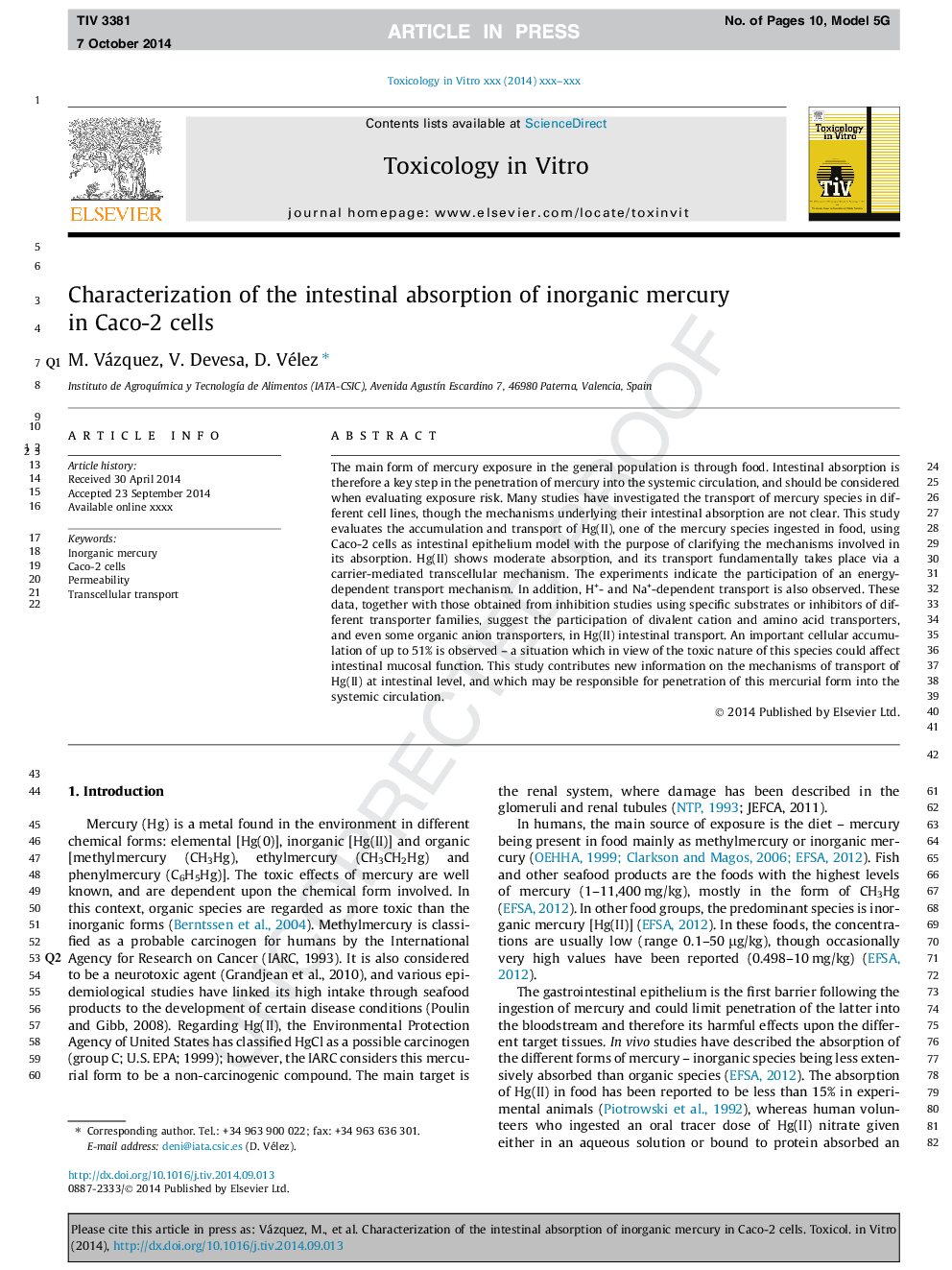| Article ID | Journal | Published Year | Pages | File Type |
|---|---|---|---|---|
| 5861524 | Toxicology in Vitro | 2015 | 10 Pages |
Abstract
The main form of mercury exposure in the general population is through food. Intestinal absorption is therefore a key step in the penetration of mercury into the systemic circulation, and should be considered when evaluating exposure risk. Many studies have investigated the transport of mercury species in different cell lines, though the mechanisms underlying their intestinal absorption are not clear. This study evaluates the accumulation and transport of Hg(II), one of the mercury species ingested in food, using Caco-2 cells as intestinal epithelium model with the purpose of clarifying the mechanisms involved in its absorption. Hg(II) shows moderate absorption, and its transport fundamentally takes place via a carrier-mediated transcellular mechanism. The experiments indicate the participation of an energy-dependent transport mechanism. In addition, H+- and Na+-dependent transport is also observed. These data, together with those obtained from inhibition studies using specific substrates or inhibitors of different transporter families, suggest the participation of divalent cation and amino acid transporters, and even some organic anion transporters, in Hg(II) intestinal transport. An important cellular accumulation of up to 51% is observed - a situation which in view of the toxic nature of this species could affect intestinal mucosal function. This study contributes new information on the mechanisms of transport of Hg(II) at intestinal level, and which may be responsible for penetration of this mercurial form into the systemic circulation.
Related Topics
Life Sciences
Environmental Science
Health, Toxicology and Mutagenesis
Authors
M. Vázquez, V. Devesa, D. Vélez,
